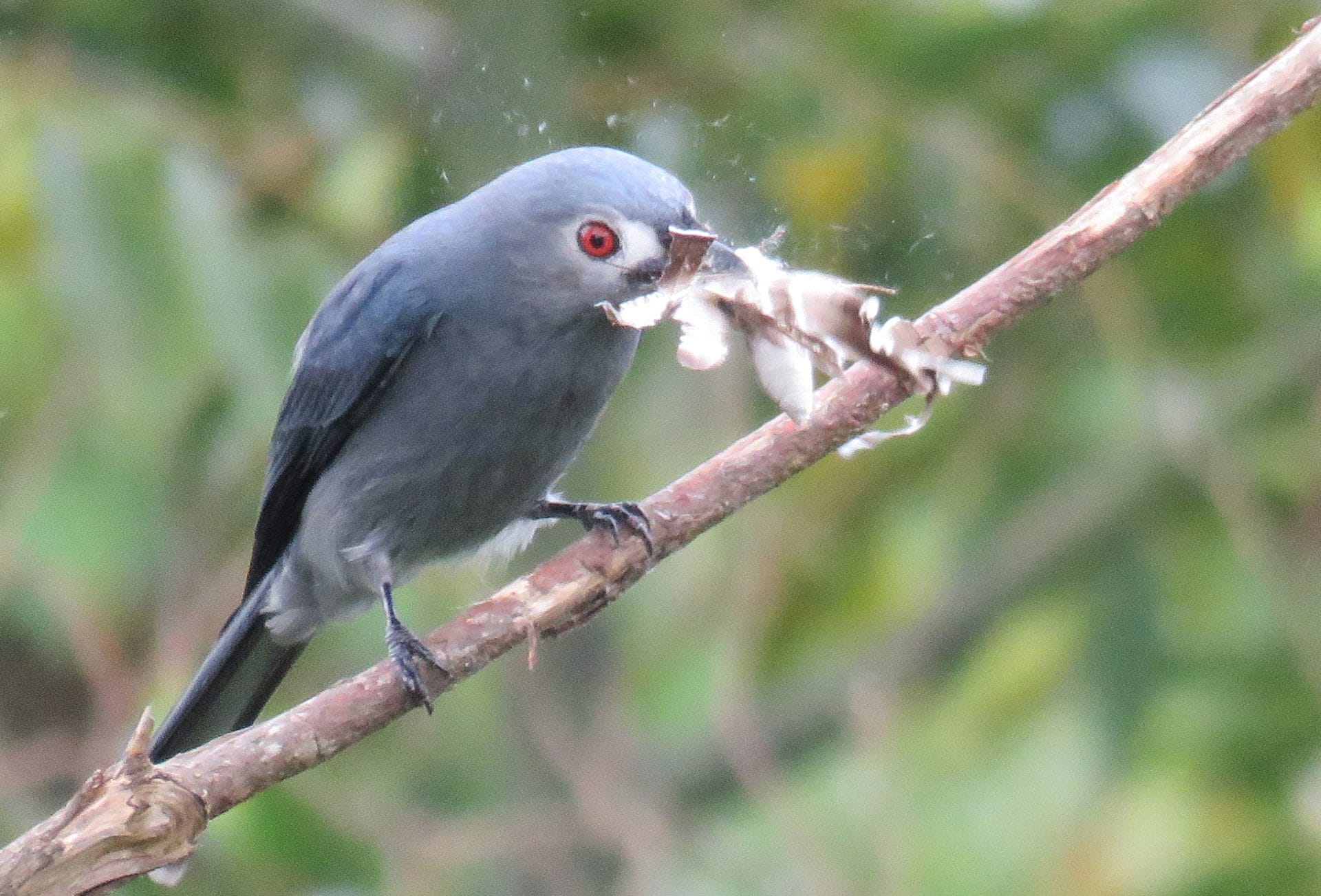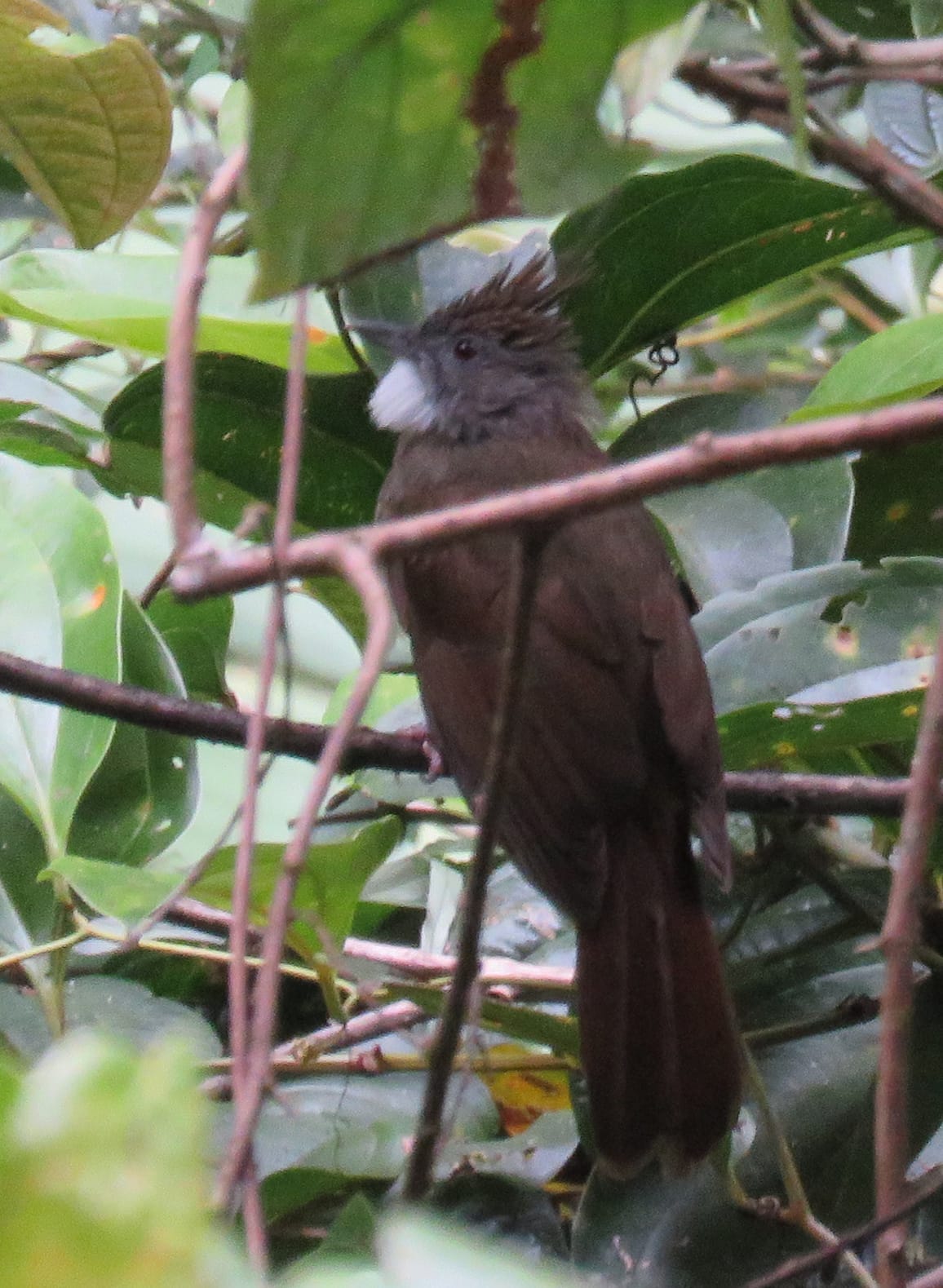by Randy Weisser
WBCP member Randy Weisser shares his secret for finding rare birds that have eluded him in the Philippines. You have to read the rest of the article to discover Randy’s secret weapon!
For the last several years my wife, Marla, and I have scanned the skies around the Philippines, hoping against hope to spot our first White-bellied Sea Eagle. In the process we found four Sea Eagles in cages, from Batangas to Mauban to Subic, but none soaring free, high above the ocean shores where we waited below in vain. But no more. Last month we saw Sea Eagles three days in a row, and even three in one day. And within just a few more days, we saw 12 other rare birds from the Kennedy guide that I have long been waiting to add to my lifer list. How did we do it? We went to Borneo.
We heard about Borneo birding from Linda, Jo, and Rene after their trip to Borneo two years ago. And we read in the Ebon about Ivan, Mark and Adri’s trip when they brought back honors for the First Borneo Bird Race. So we put that on our wish-list of places to bird. Its only a 2 hour flight from Manila to Kota Kinabalu (KK), so by watching for cheap tickets on Cebu Pacific, and good hotel rates on Agoda, it came together in February and off we went.
We booked our first three nights at the Jesselton, a decent enough 3-Star hotel within walking distance of most of the tourist attractions of the city proper. The city is laid out on a long strip along the waterfront, with the forest only about three or four blocks away at the back. So from our hotel we were about five minutes away from Egrets on the ocean side, and five minutes away from Pink-necked Green-Pigeons and Green Imperial-Pigeons on the other side. And with Kentucky Fried Chicken in between.
Our first morning we walked along the waterfront from our hotel down to the Philippine Market. The most common birds along the waterfront were Great Egrets and the black-phase Reef Egret. Both could be found sitting on boats, docks, roof tops, and equipment, and seemed hardly bothered by all the pedestrian traffic.


The most abundant bird in the downtown area was the Asian Glossy Starling, with hundreds of them roosting wherever they could find a tree in the city. One poster I read referred to these pests as the Philippine Glossy Starling. I propose that we officially rename them the Bornean Glossy Starling and send them back home where they came from.
That afternoon we took a short walk up to Signal Hill, which is a popular spot to look over the city and to watch the sun set. More interesting to us were the trees and bushes below the lookout, where we began adding lifers to our list. Olive-winged Bulbuls, a couple of very busy Ashy Tailor Birds, several active Striped Tit-Babblers, a few quiet Dusky Munias, and a pair of Great Coucals– all birds found in our Kennedy Birds of the Philippines book, but not yet seen by us in the Philippines.

Just as we were headed back to the hotel, Marla spotted a pair of Sea Eagles directly above us, swooping back and forth across the sky, wing tip to wing tip, in what looked like a choreographed, synchronized, aerial courtship. What an awesome treat as our first sighting of the Sea Eagle. That was the finale of our first day of birding in Borneo, with six lifers, all listed in the Kennedy.

After two more days of walking around KK seeing the sights, and seeing Sea Eagles each day, we made our plans to head up to Mt. Kinabalu National Park. The place to catch the Mini-bus is right in front of the Dreamtel Hotel, also walking distance from the Jesselton. It’s about a two hour ride up to the Park from KK, with terrific views of the famous 4000 meter mountain for the last half of the trip. The only other higher peaks within Southeast Asia are in Papua New Guinea. In fact you have to go to the Himalayas to find higher mountains. The Park entrance, though, is about the same elevation as Baguio, at 1500 meters. Bring sweaters for this trip. We didn’t and suffered for it every night.
Linda recommended the D’Villa Ria Rina Hotel, as a more affordable place to stay. It’s about a ten minute walk outside the Park entrance. Linda called the hotel “rustic”. I would not be so generous. But what the hotel lacked in amenities, it made up for in birds. The hotel café veranda should be declared a national birding hot-spot. It was almost impossible for us to finish a meal there because of all the bird action.



One of our lifers, a White-throated Fantail, which is a handsome, dark-breasted version of our Pied Fantail, actually landed on our table during lunch. Ashy Drongos flew in and out of the covered café chasing moths. And Scarlet, or Temminck Sunbirds, the most striking sun bird of any, hovered around hanging pots of flowers. Altogether we had 12 lifers just from the café, while having lunch. Four of those were in the Kennedy– The Ashy Drongo, the Asian Brown Flycatcher, the Blue-and-white Flycatcher, and the Orange-bellied Flowerpecker.




We saw a few other birds there we couldn’t identify. We were a little handicapped by not having a Borneo Birding book with us, but we took pictures and then went online in the café, (not available in the rooms) and looked up birds while we were watching. There are a couple of really good websites for Borneo birds. One is at http://borneobirds.com and has a lot of pictures by CK Leong and others. The other website features pictures by Mr. Wong Tsu Shi. http://www.pbase.com/wongtsushi/birds_of_borneo Mr. Wong provided some help in identifying some of the birds when we emailed him pictures with questions. He was very generous with his help, and it turns out that he knows our Raptor King Alex.
The staff were also very helpful. Of the four ladies running the hotel and café, two had Filipino parents. They were both born in Sabah so had no passport or work permits. Because of that, the hotel owner can ask them to work seven days a week. One of the girls made her first visit to the Philippines when she was twenty. She had to travel through the back door to the Philippines, landing in Zamboanga and making her way to Cebu where she attended college despite not speaking Cebuano or Tagalog. Now she is back in Sabah, trying to support her mother and younger siblings who also live in Sabah. It’s a difficult life for them, but they oozed Filipino hospitality and charm.
The most spectacular bird that we spotted there, which only allowed me a partial picture, was the Borneo Forktail, along a little stream of water on our ten minute walk between the hotel and the Park Entrance. Inside the Park, there are a number of well-marked trails for trekkers, but which work good for birders also. We chose to stay mostly on the roads though, which give a little more viewing space for birds. Our personal birding hotspot was along the road between the Park entrance gate and the Ligawu Café, inside the Park. It’s a only about half a kilometer walk on a gentle grade and gave us constant birding activity. As in Baguio, it seems that the best birding was mid-morning, or even mid-day. That worked well for us and we took lunch at the Ligawu Café which we thought was outstanding and not as costly as we had feared.
We ended up with 7 lifers inside the Park, (compared to 12 at the hotel), one of which was found in the Kennedy—the Yellow-breasted Warbler. Another lifer was the Borneo Treepie, a bird with no close counterpart in the Philippines. The Ochraceous Bulbul looked like he just stepped out of a Lord of the Rings movie, with his little white beard, tussled hairdo, and his stern demeanor. Its unfortunate that he got stuck with such an unimaginative name. Another must-see bird in Kinabalu is the Chestnut-hooded Laughing Thrush, which is much more appropriately named.

After 2 or 3 days there we made our plans to head back to KK but discovered that every hotel in town was fully booked because of the Chinese New Year. We were finally able to wrangle a room at the Dreamtel for a little more than we wanted to pay, but it is a brand new hotel so quite nice. We could never get the internet to work in the room but had no other complaints. We had read in a travel blog about a small Chinese Noodle restaurant not far from there, right next to Lavender Lodge, where Linda and team had stayed, that made the noodles right in the restaurant. That was fun to watch and great eating also.
The last birding we did while in KK was to take a ten minute taxi ride to the Wetlands Sanctuary. This is a protected mangrove area with a kilometer or two of boardwalks through mangroves. Here we added the Common Iora and the Stork-billed Kingfisher, both in the Kennedy. It is really quite fascinating to walk through the mangroves and it made me wish something like that could be done at the coastal area. The LDGEDSC has far more birds, both in numbers and in species. If it could be set up like the Wetlands Sanctuary, with a visitors Center, board walks, entrance fee, etc., it would be a wonderful attraction for birders visiting Manila. Somehow, despite all the new hotels and resorts springing up everywhere in KK, they have been able to preserve their Wetlands Sanctuary in the middle of it all.
We did expect to find lifers in Borneo (27), but we didn’t plan on a number of them (13) being lifers from the Kennedy. That was an unplanned benefit. Even if they don’t go on my Philippines life list, I was glad to finally be able get a view of them.
We were able to get pictures of almost all of them, which Des and team have helped to make my new standard for lifers or other rare sightings. I am using the new Canon SX60, which is a glorified point and shoot, with an unbelievable 1300mm stabilized lens. It has frustrating limitations but if the conditions are right, it gets great shots. All of these pictures are with the SX60.
It was a great week of combining tourism, birding, and bird photography. If reclaiming Sabah as the southernmost Philippine province doesn’t work out, then at least we can take advantage of its proximity to finally catch up with some of our most hard to find Kennedy birds.

Pingback:April 2015 | e-BON
Nice article and informative. However i was surprised by their difficulty to see free roaming white bellied sea eagles. I went to Mauban only once and saw a free roaming white bellied sea eagle very close and long time. In Coron town just by having breakfast somewhere near the Pier i could see white bellied sea eagles everyday. In Barangay Cheey in Busuanga on a small island i found 3 living there. Saw them a,so regularly in El Nido and in Port Barton.
I’ll ask him if he’s gone to Palawan for birding. Maybe he hasn’t yet. I’ve only seen them in Sabang, Palawan and Batanes. Nice to hear that you saw one in Mauban!